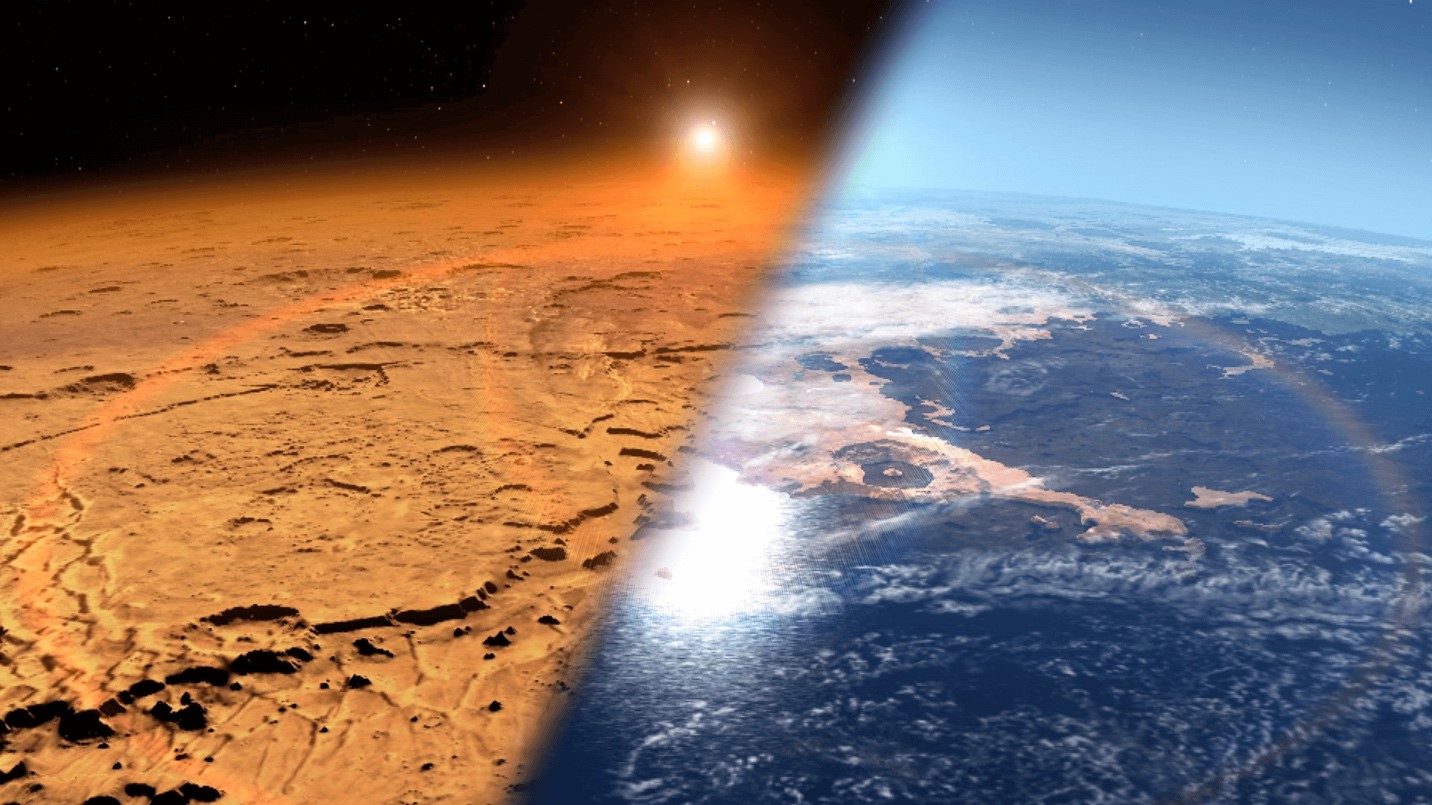







Home > Research > Research Overview > 2025 > Exploring the Fate of Mars' Oceans
Lecturer
MASUNAGA Kei
Mars, located next to Earth, is currently a cold and dry environment, unsuitable for supporting life. However, observations from past exploration missions suggest that ancient Mars was warm, with liquid water (oceans) present on its surface, creating conditions that might have been suitable for life (Figure 1). So, where did these once-existing oceans go? One prominent hypothesis is that the water escaped into space as gas.
To understand this phenomenon, known as "atmospheric escape," I investigate the mechanisms through which the atmospheric components of Mars escape into space, using data from Mars exploration missions and space telescopes (Figure 2). This research contributes to a deeper understanding of the evolution of Mars' atmosphere and its climate changes.
Additionally, I am involved in Japan's Mars Moon eXploration (MMX) mission, scheduled for launch in 2026 (Figure 3). Recently, I have also been conducting studies aimed at observing atmospheric escape from Mars using MMX.

▲Figure 1. Illustration of present and ancient Mars(©NASA, https://www.nasa.gov/solar-system/nasa-research-gives-new-insight-into-how-much-atmosphere-mars-lost/)

▲Figure 2. Atmospheric escape at Mars

▲Figure 3. The MMX mission(©JAXA, https://www.mmx.jaxa.jp/)
Related Links